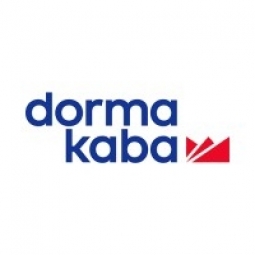Customer Company Size
Large Corporate
Region
- America
Country
- United States
Product
- Kaba RT locks
- System 6000 software
- Messenger™ on-line wireless system
Tech Stack
- RFID technology
- Windows-based software
- Wireless systems
Implementation Scale
- Enterprise-wide Deployment
Impact Metrics
- Cost Savings
- Customer Satisfaction
- Productivity Improvements
Technology Category
- Application Infrastructure & Middleware - API Integration & Management
- Networks & Connectivity - RFID
Applicable Industries
- Education
Applicable Functions
- Facility Management
Use Cases
- Building Automation & Control
- Perimeter Security & Access Control
Services
- System Integration
- Hardware Design & Engineering Services
About The Customer
EdR is one of the nation’s largest developers, owners, and managers of high-quality collegiate housing communities. Founded in 1952 in Memphis, TN, the company quickly became known as one of the most successful developers in the country. Twelve years later, they introduced the “student hotel concept” to the market which has grown to become a vibrant, active student housing industry. With an extensive portfolio of both privatized and university-owned collegiate housing communities, their pioneering history and innovative approach, EdR is the benchmark company within the student housing industry. Many of their concepts and practices have been adopted as standard operating procedure by their industry peers. Most important to EdR’s success is their talent for listening and collaboration with their collegiate partners to create unique solutions for each university or college. This long-term investment process includes careful planning and proposals that are suited exclusively for the needs of the institution.
The Challenge
EdR, a leading developer, owner, and manager of high-quality collegiate housing communities, was facing the challenge of outdated housing that could not meet the needs of a 'wired' generation. With enrollments increasing at a greater pace, university leaders realized the need for new construction of privatized developments and repurposing of school-owned facilities. EdR was aware of the benefits that electronic locks would provide when dealing with key control, and saw them as a perfect fit for student housing projects. However, locks using mechanical keys needed to be physically changed at each semester turn, which was a significant operational challenge.
The Solution
In 2005, after a thorough analysis of electronic lock systems, EdR chose to team up with Saflok, the pioneer manufacturer of advanced access control systems and electronic locks. Saflok developed new access control technology exclusively for mulithousing applications that benefits property owners, maintenance staff, and residents with cost-effective solutions. EdR began to offer an electronic key and access control solution by selecting System 6000 software and MT locks from Kaba. The RT system features a wireless, standalone lock with RFID contactless technology. It is the latest of many electronic lock models operated by Kaba’s System 6000 software, and features proximity readers, with a variety of credential options for lock system users.
Operational Impact
Quantitative Benefit

Case Study missing?
Start adding your own!
Register with your work email and create a new case study profile for your business.
Related Case Studies.

Case Study
Revolutionizing Medical Training in India: GSL Smart Lab and the LAP Mentor
The GSL SMART Lab, a collective effort of the GSL College of Medicine and the GSL College of Nursing and Health Science, was facing a challenge in providing superior training to healthcare professionals. As clinical medicine was becoming more focused on patient safety and quality of care, the need for medical simulation to bridge the educational gap between the classroom and the clinical environment was becoming increasingly apparent. Dr. Sandeep Ganni, the director of the GSL SMART Lab, envisioned a world-class surgical and medical training center where physicians and healthcare professionals could learn skills through simulation training. He was looking for different simulators for different specialties to provide both basic and advanced simulation training. For laparoscopic surgery, he was interested in a high fidelity simulator that could provide basic surgical and suturing skills training for international accreditation as well as specific hands-on training in complex laparoscopic procedures for practicing physicians in India.

Case Study
IoT platform Enables Safety Solutions for U.S. School Districts
Designed to alert drivers when schoolchildren are present, especially in low-visibility conditions, school-zone flasher signals are typically updated manually at each school. The switching is based on the school calendar and manually changed when an unexpected early dismissal occurs, as in the case of a weather-event altering the normal schedule. The process to reprogram the flashers requires a significant effort by school district personnel to implement due to the large number of warning flashers installed across an entire school district.

Case Study
Implementing Robotic Surgery Training Simulator for Enhanced Surgical Proficiency
Fundacio Puigvert, a leading European medical center specializing in Urology, Nephrology, and Andrology, faced a significant challenge in training its surgical residents. The institution recognized the need for a more standardized and comprehensive training curriculum, particularly in the area of robotic surgery. The challenge was underscored by two independent studies showing that less than 5% of residents in Italian and German residency programs could perform major or complex procedures by the end of their residency. The institution sought to establish a virtual reality simulation lab that would include endourological, laparoscopic, and robotic platforms. However, they needed a simulator that could replicate both the hardware and software of the robotic Da Vinci console used in the operating room, without being connected to the actual physical console. They also required a system that could provide both basic and advanced simulation training, and a metrics system to assess the proficiency of the trainees before they performed surgical procedures in the operating theater.

Case Study
Edinburgh Napier University streamlines long-distance learning with Cisco WebEX
• Geographically dispersed campus made in-person meetings costly and inconvenient.• Distance-learning programs in Malaysia, India, and China required dependable, user-friendly online tools to maximize interaction in collaborative workspaces.• Virtual learning environment required a separate sign-in process, resulting in a significant administrative burden for IT staff and limited adoption of collaboration technology.

Case Study
8x increased productivity with VKS
Before VKS, a teacher would spend a lot of time showing a group of 22 students how to build a set of stairs within a semester of 120 hours. Along with not leaving the teacher much time to provide one-on-one support for each student to properly learn carpentry, it also left a considerable amount of room for error. Key information would be misinterpreted or lost as the class was taught in the typical show-and-tell way.

Case Study
Scalable IoT Empowering GreenFlex's Sustainable Growth
GreenFlex, a company that supports sustainable development, decarbonization, and energy efficiency, faced several challenges in its quest to expand its business. The company needed to deploy a robust and sustainable IoT technology to support its growth. It was crucial for them to monitor and control devices at customer sites in a safe and reliable manner. They also needed to integrate devices across a range of communication protocols and gather and act on data to meet efficiency targets. GreenFlex had previously built IoT capabilities into its digital platform, GreenFlexIQ, to monitor and manage customer sites remotely. However, they soon realized that they needed a new platform to support their ambitions. They needed a platform that could scale to connect more devices for production management and make it easier for the operations team to manage devices in the field.







